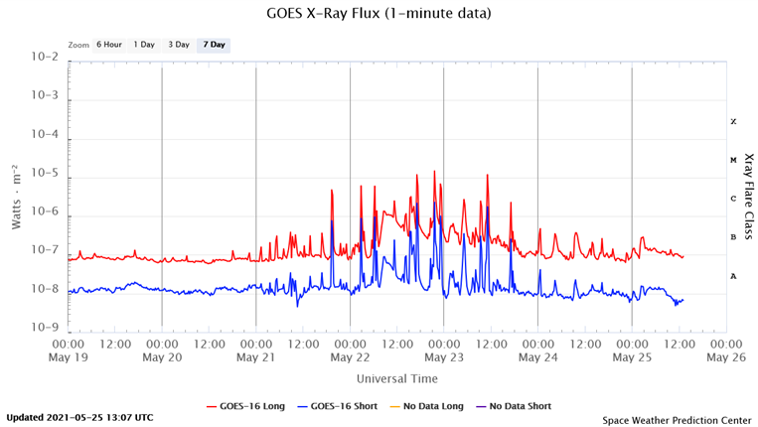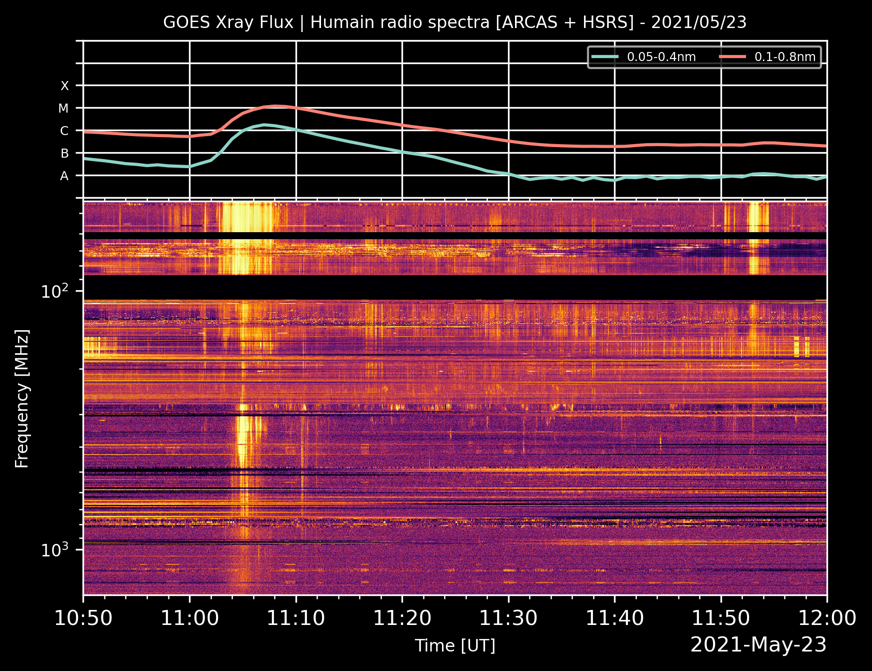NOAA 2824 rotated over the northeast solar limb as a single, mature sunspot on 17 May. Starting on 21 May, flux of a magnetic polarity opposite to that of the main sunspot started to emerge to the southeast and to the west of this spot. This can be seen in the SDO/HMI imagery underneath, with on the left white light imagery and on the right the magnetogram of the active region, the red and blue colors representing respectively positive (field lines energing from the Sun) and negative (field lines returning to the Sun) magnetic fields. As the flux emerged, small satellite spots could be seen forming around the main mature spot. The overall outlook is similar to e.g. the active regions NOAA 2158 (see this STCE Newsitem) and NOAA 9236 (Newsitem). However, those regions were much larger than NOAA 2824 and were able to sustain the magnetically unstable region, hence they were able to produce much stronger flares all the way up into the X-class range.


For NOAA 2824, the emergence of the areas of mixed magnetic polarity gradually drove the flaring frequency and intensity upwards, with 14 C- and 3 M-class flares in just 48 hours, a frequency not seen since the last active episode in September 2017. The evolution can be seen in the GOES X-ray flux plot above. The 3 M-class flares were all of the M1 level, with the first one originating from the area to the southeast ("lower left") of the main sunspot, and the two other M-class flares coming from the active area to the west ("right") of this sunspot. This can be seen in the animation underneath, which shows the flaring in this active region from 21 May (06UT) till 24 May (06UT) thru the SDO/AIA 131 filter. The 3rd M-class flare happened during the noon hours of 23 May, and an associated group of Type III radio bursts (see the SWx classification page and the Humain SC25 page) was nicely captured by the Humain solar radio observatory. After this last M-class event, the areas of magnetic mixing gradually dissipated and so the flaring activity dwindled down accordingly.







